
'Perceptual Motor Program' (PMP) for Prep Glasshouse Christian College
Perceptual motor skills training: This method has been referred to as the interventional program and was designed and conducted by Kurtz (2008) and includes physical awareness, motor planning, mutual motor integrity, balancing skills, fine motor harmony, visual performance skills and oral motor skills (Kurtz, 2008).

PMP ideas. Perceptual motor program. Gross motor skills. Gross motor
The Motor-Free Visual Perception Test—fourth edition (MVPT-4) is a revised version of the Motor-Free Visual Perception Test—third edition. The MVPT-4 is used to assess the visual-perceptual ability of individuals aged 4.0 through 80+ years via a series of visual-perceptual tasks that do not require a motor response.
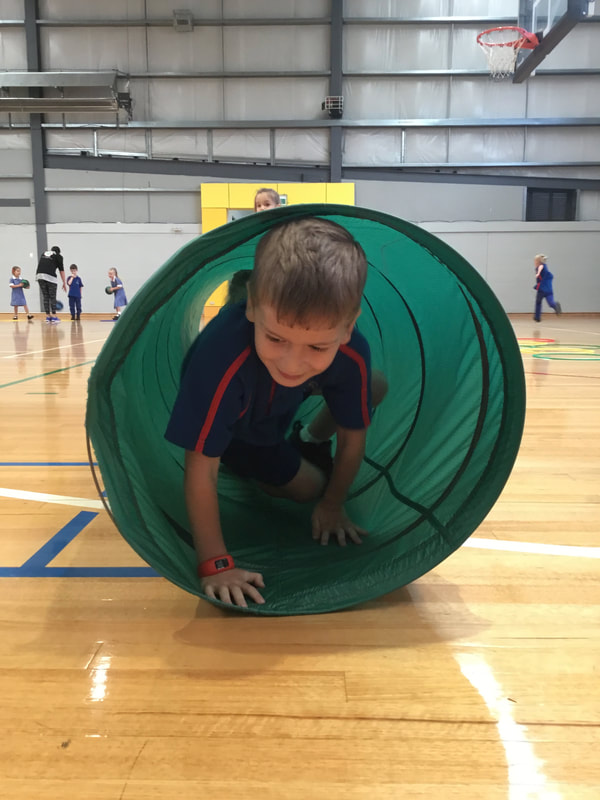
pmp PERCEPTUAL MOTOR PROGRAM
Perceptual motor skills refer to a child's developing ability to interact with his environment by combining the use of the senses and motor skills. This is viewed as a process where visual, auditory, and tactile sensory abilities are combined with emerging motor skills to develop perceptual motor skills. 1
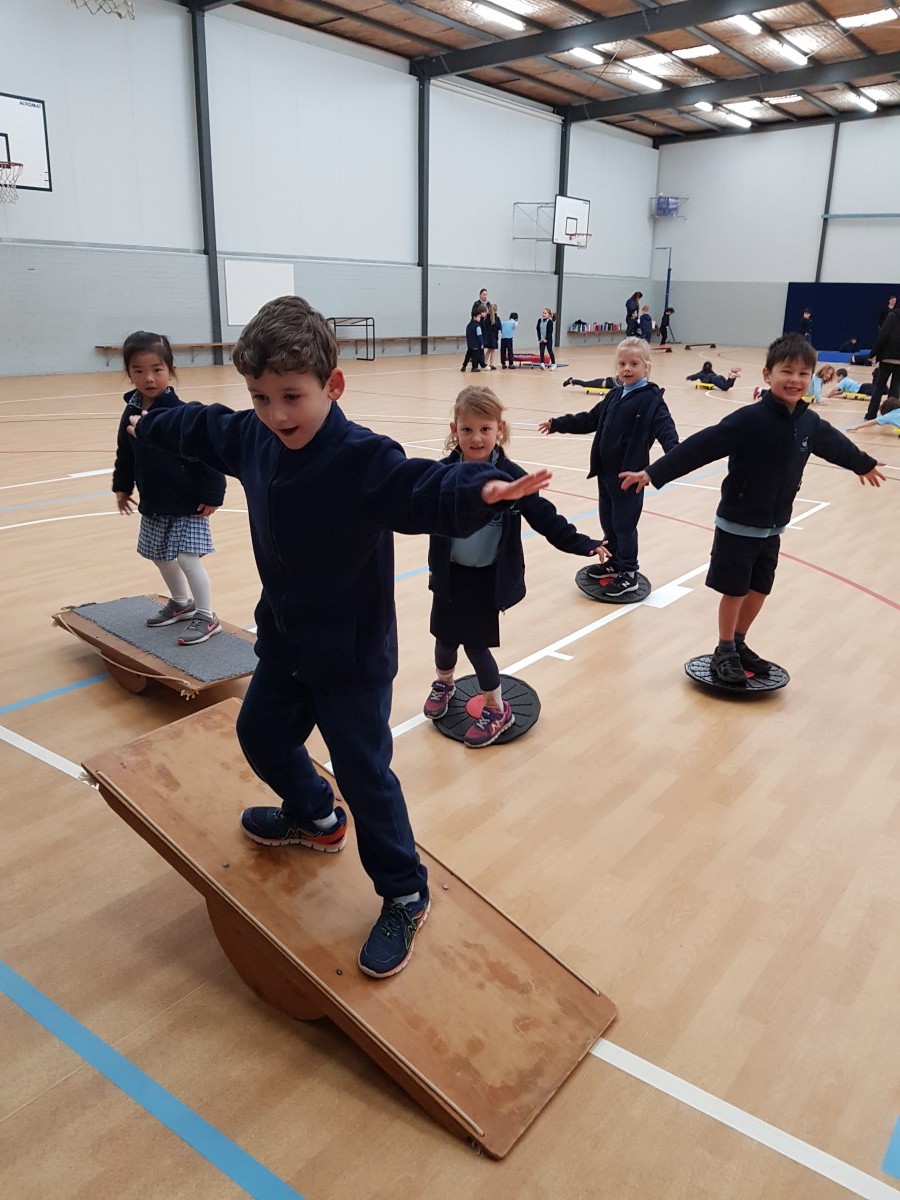
Perceptual Motor Program Templestowe Heights Primary School
The book and accompanying web resource include - 200 station activities; - evidence-based research proving the program's effectiveness in improving physical and cognitive skills; - complete instructions for creating a perceptual-motor learning laboratory in a variety of learning environments; - expert guidance in developing lateral skills.
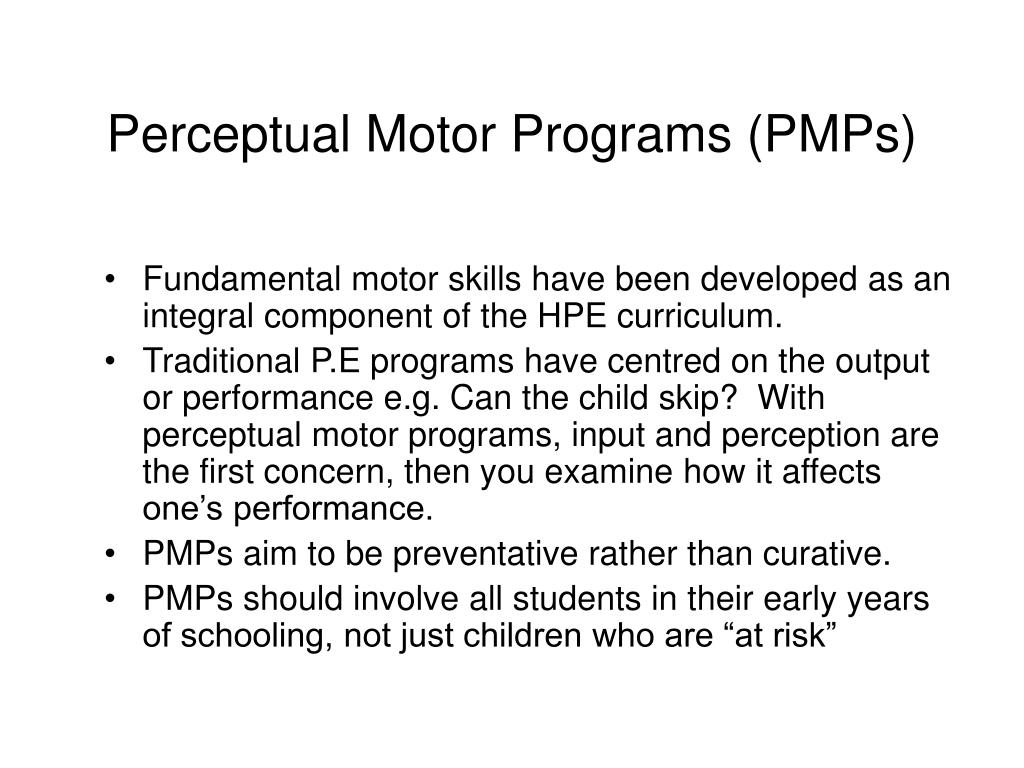
PPT Perceptual Motor Programs PowerPoint Presentation, free download
Third, the relationship between the rationale of perceptual-motor programs and the Australian Early Childhood Association's Code of Ethics is rendered problematic. In response to these concerns, play is discussed as an alternative and effective means of developing perceptual-motor skills, in a way that recognises and builds on individual needs.
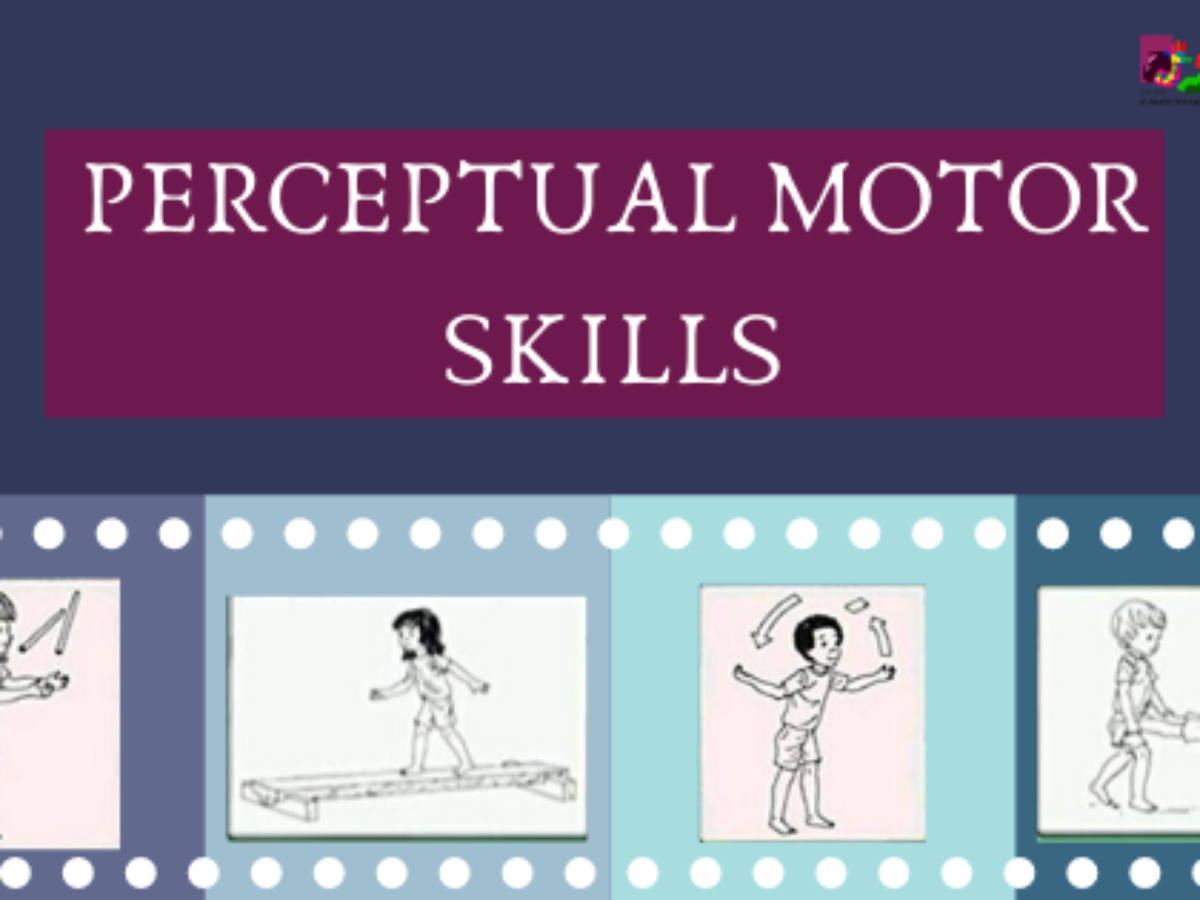
PerceptualMotor Activities For Children PDF With Web Resource
Deficits in motor learning. Experimental studies have demonstrated that cerebellar damage causes deficits in motor learning in both human patients and experimental animals. One prominent experimental model is the vestibuloocular reflex (VOR). This reflex allows us to maintain gaze on an object when the head is rotated (Figure 5.8).

Perceptual Motor Program Activity Cards for Gross Motor Skills Gross
A perceptual-motor program is a movement class for youngsters in the early elementary school years, typically grades K-2. However, it's also highly suitable for preschools and day care centers. It's typically run by a physical education instructor or a classroom teacher and is conducted once or twice a week with the help of parent volunteers.

Perceptual Motor Program Download Scientific Diagram
To learn a movement, a "motor program" consisting of two states of memory (i.e. memory trace and perceptual trace), is required. The memory trace (equivalent to recall memory in verbal learning) initiates the motor movement, chooses its initial direction and determines the earliest portions of the movement.
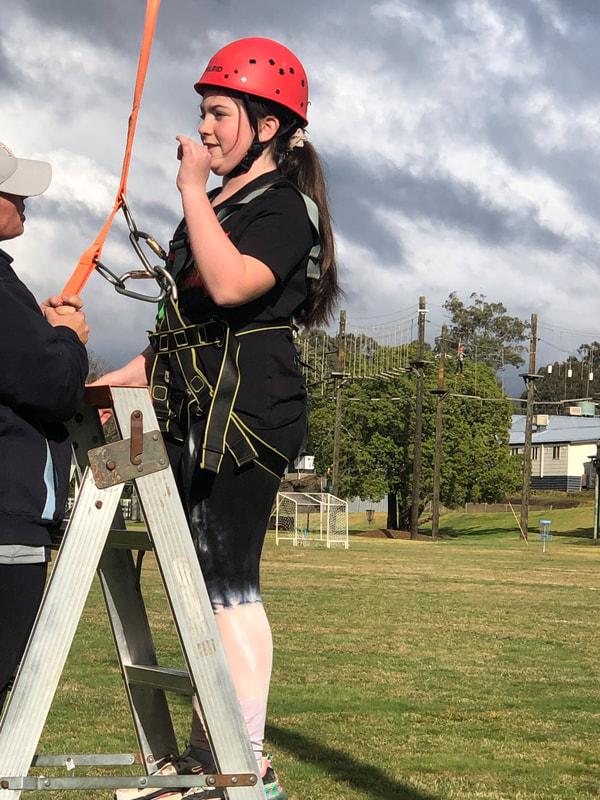
pmp PERCEPTUAL MOTOR PROGRAM
In this paper, perceptual-motor programs being used as physical education programs are examined. The purpose of this article is to encourage thought and reflection about perceptual-motor program practices which appear to be counter-productive to the development of children's motor skills, and enjoyment of physical activity.

(PDF) Perceptual Motor Program Pada Autistic Disorder
Perceptual, motor, and physical development are foundations for children's learning in all domains. Development in these areas allow children to fully explore their environment and interact with people and objects. The domain includes four elements: perception; gross motor; fine motor; and health, safety, and nutrition.
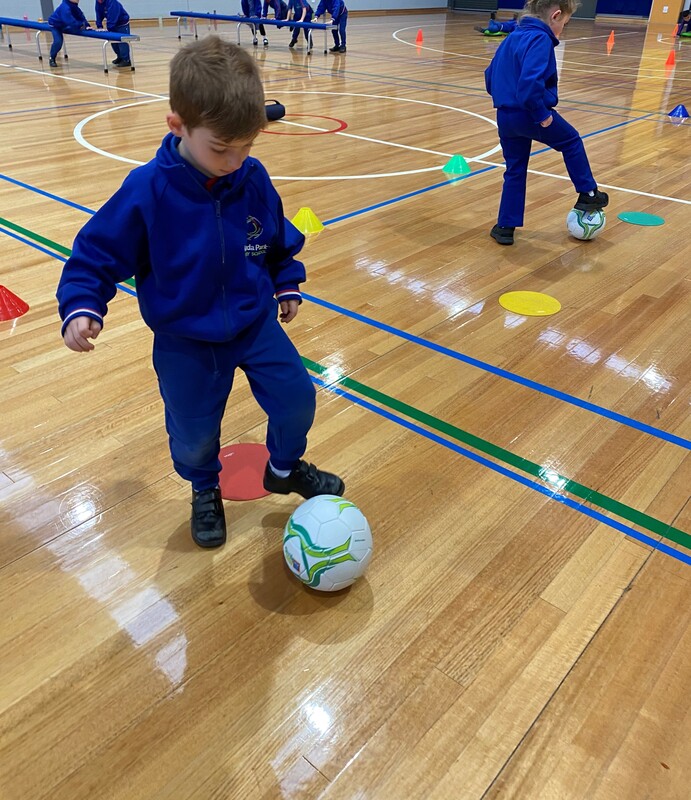
Perceptual Motor Program (PMP)
Unlike fundamental movement skills that form the building blocks for movement, such as hopping, jumping, running or balance, perceptual motor development connects a children's perceptual or sensory skills (the brain) to their motor skills (the body) so they can perform a variety of movements and confidently interact with their environment (1).

The Perceptual Motor Program (PMP) Foundation 2021 Bethal Primary
So, we're going to look at perceptual development because it's so important and relates to fine and gross motor development, but also other types of development, as well. And so, your interest in learning more about perceptual development motivated us to dedicate this last infant- toddler Teacher Time for this series to this very important topic.

Perceptual Motor Program YouTube
Perceptual Motor Program Training - Children's language, visual, movement, hearing and listening skills can be improved by EmpowerKidz!
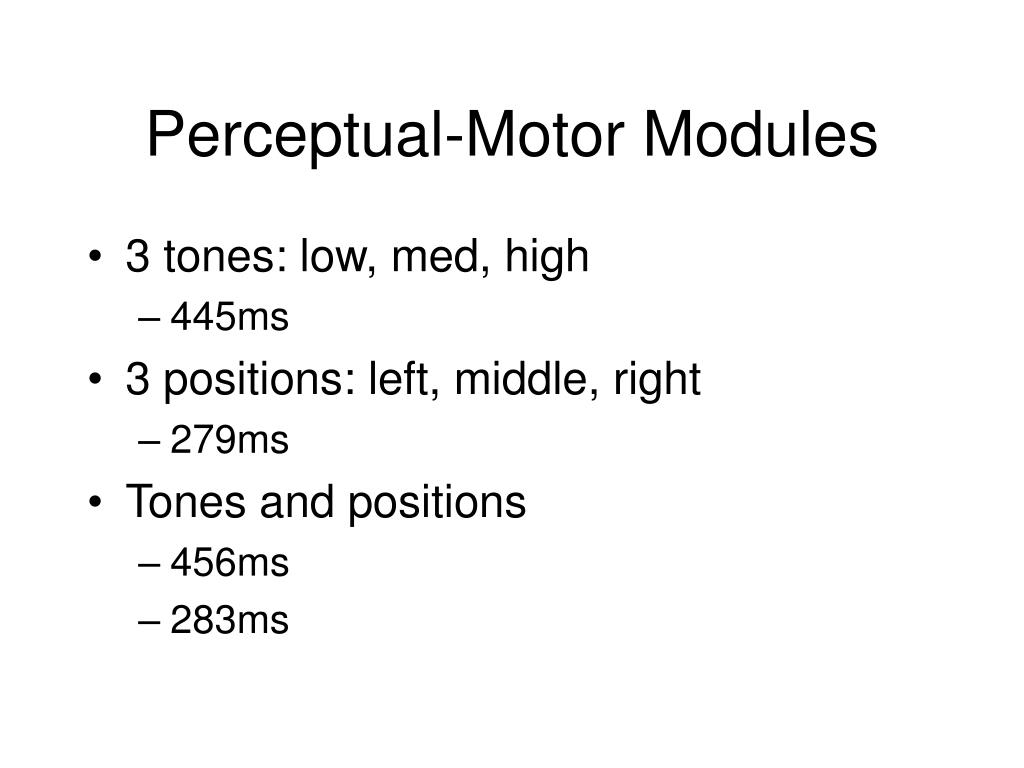
PPT ACTR PowerPoint Presentation, free download ID1183204
How do perceptual, motor, and physical development goals relate to school readiness? The environment of a healthy womb and healthy habits established in the first five years of life lay a strong foundation for the physical and mental well-being needed for school success.

PPT Perceptual Motor Program PowerPoint Presentation, free download
Perceptual-motor skills and movement concepts are essential to all facets of young children's lives. Perceptual-motor coordination is the process of receiving, interpreting, and using information from all of the body's senses. Perceptual-motor development requires children to integrate both sensory and motor abilities to carry out physical.

Junior Perceptual MotorProgram
Perceptual Motor Skills refers to a child's growing ability to interact with their environment by combining use of their senses and motor skills. Perceptual Motor Skills can be broken down and explained in two parts. Perception refers to the children's use of their senses to gather and understand information and respond to the world around.